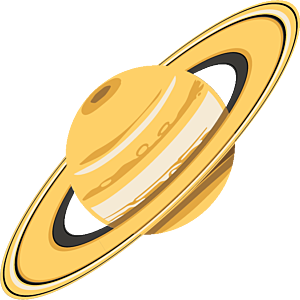The Downlink • Oct 18, 2024
Solar maximum = maximum awe
Space Snapshot

Comet Tsuchinshan-Atlas put on a great show this week, appearing in western skies at dusk. Increased solar activity makes the comet’s tail extra long, enhancing views like this one that Planetary Society member John McGrath captured over the Perth Hills in Western Australia. Tsuchinshan-Atlas is expected to become more difficult to spot as the Moon passes through its full phase in the coming days, but will reappear around Oct. 20. Learn more about the comet and how to spot it.
Fact Worth Sharing

Comet Tsuchinshan-Atlas likely came from the Oort Cloud, a group of extremely distant icy bodies that form a sphere around the Solar System. While comets from this area sometimes approach Earth, no object has ever been observed directly in the Oort Cloud.
Mission Briefings


Europa Clipper has launched! The spacecraft took off on Oct. 14 from Cape Canaveral, Florida, beginning its six-year journey to the Jupiter system and the icy moon Europa. The mission will study Europa’s subsurface oceans and look for signs of habitability, among other things. Image credit: SpaceX.

The Sun is officially at its maximum phase. Officials from NASA and NOAA (the National Oceanic and Atmospheric Administration), and the international Solar Cycle Prediction Panel announced on Oct. 15 that the Sun is now in the most active and stormy phase of its 11-year cycle. Solar maximum is expected to last for about a year, with more frequent solar storms creating effects on Earth including beautiful auroras.

Scientists may have found a volcanic exomoon. Observations of a cloud of sodium gas near the giant gas exoplanet WASP-49 b might be evidence of a volcanic moon. Gas coming from Jupiter’s volcanic moon Io creates a similar phenomenon here in our Solar System.

SpaceX launched Starship and caught its booster. Starship, the largest and most powerful rocket ever built, took off on a successful test launch on Oct. 13, marking its fifth integrated launch. A new achievement was added to the list, when the first-stage booster, known as Super Heavy, descended and was caught by its launch mount.
In the news

“We’ve never had a member outreach like this… I think we just helped establish it as something that needed to be done, something that had support.” — The Planetary Society’s Chief of Space Policy, Casey Dreier, to The New York Times on the unprecedented action by Planetary Society members to advocate for NASA’s Europa Clipper mission when budget cuts almost prevented it from happening.
From The Planetary Society

Aspiring space students, listen up! This week, Planetary Radio is all about advice for students pursuing higher education in space-related fields. The episode features interviews with three student guests who share their tips on interning, building community through conferences, and generally surviving grad school. Pictured: Dr. Briley Lewis, a recent Ph.D. graduate from UCLA and a guest on this week’s Planetary Radio, who studies high-contrast imaging of exoplanets and debris discs. Image credit: Briley Lewis.
Monthly members: Action needed!
The Planetary Society is upgrading our membership management system and our credit card charging processor has changed. For many monthly members, the process happens automatically and you won’t notice any changes to your monthly payment process. For other monthly members, however, these changes will require us to have members update their credit/debit card information.
To facilitate this, we are sending communications to members who need to update their credit card information. Please note that if you don’t update your information, your membership will lapse and you will lose access to your benefits. So, please be sure to update your information without delay!
Questions?
If you have questions regarding our new systems or the update process, you can learn more on our upgrade page and our FAQ page, or email us at [email protected]. You may also call us at (626) 793-5100, Monday through Friday, 12 p.m. to 7 p.m. ET.
What's Up

This week, look for super bright Venus setting in the western evening skies, with yellowish Saturn rising in the east and crossing the sky throughout the night. Jupiter and the Moon rise together around midnight, with Mars below them. Look for Comet Tsuchinshan-Atlas in the west around dusk starting on Oct. 20. All this and more can be found in our guide to October’s night skies.
Are you the 1 in 200?

Support space science! We need 200 new members by Oct. 31 to fund our mission. Not a member yet? Join today!
All Planetary Society members receive exclusive access to our online Member Community, which features live virtual events, free classes, opportunities to connect with fellow members, and more! Sign up today and help fuel our mission to advance space science and exploration.
Send us your artwork!
We love to feature space artwork in the Downlink. If you create any kind of space-related art, we invite you to send it to us by replying to any Downlink email or writing to [email protected]. Please let us know in your email if you’re a Planetary Society member!


 Explore Worlds
Explore Worlds Find Life
Find Life Defend Earth
Defend Earth


